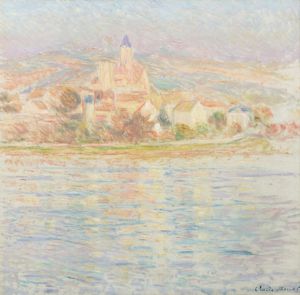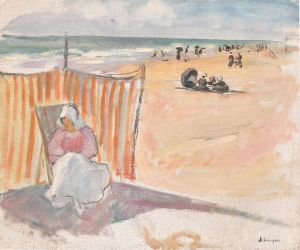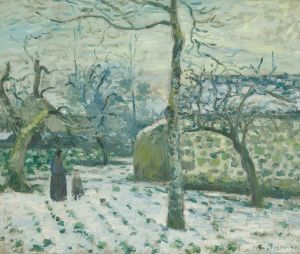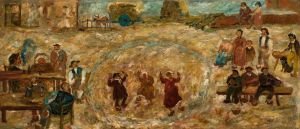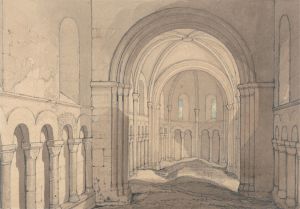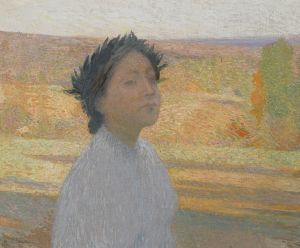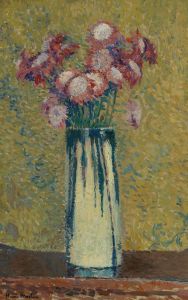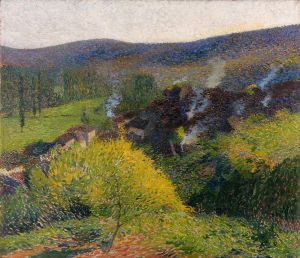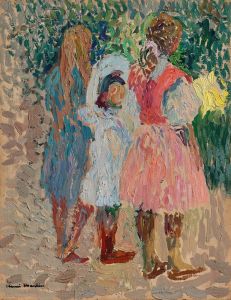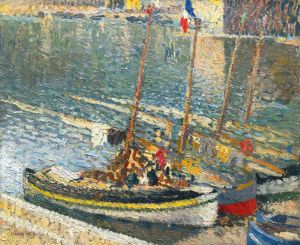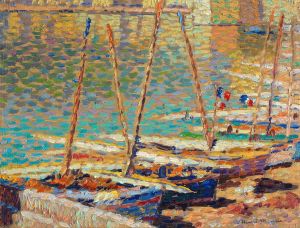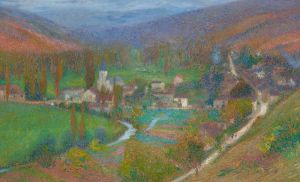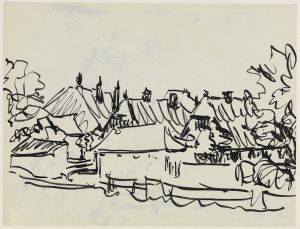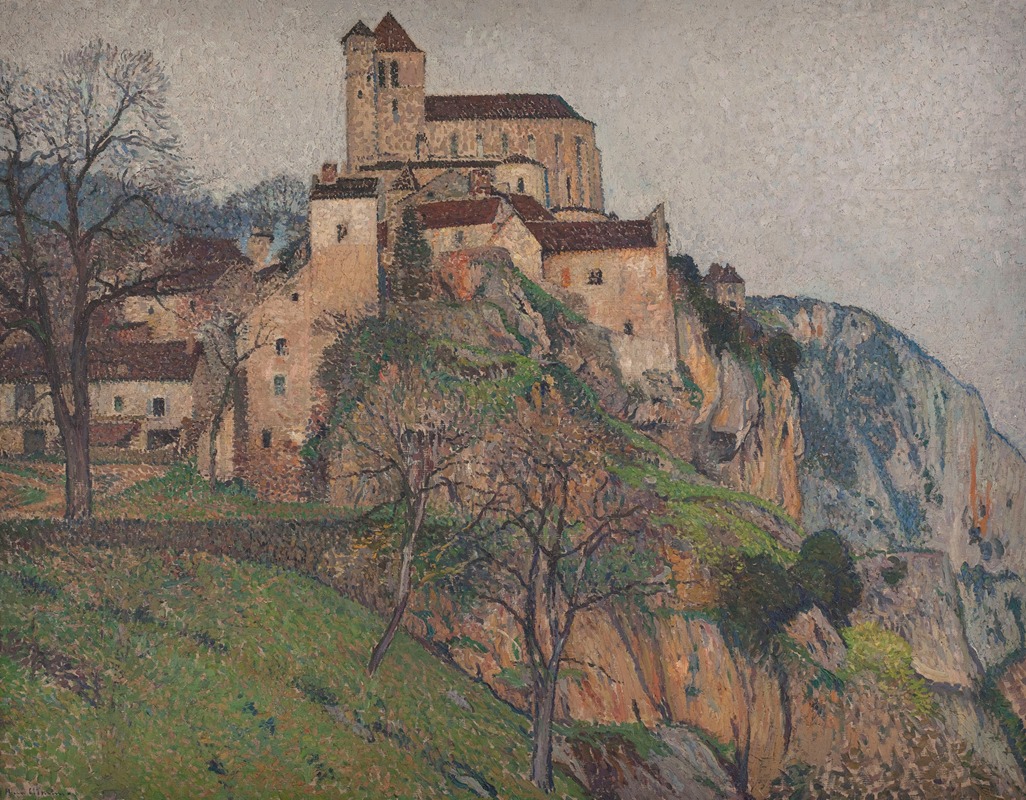
Saint-Cirq-Lapopie
A hand-painted replica of Henri Martin’s masterpiece Saint-Cirq-Lapopie, meticulously crafted by professional artists to capture the true essence of the original. Each piece is created with museum-quality canvas and rare mineral pigments, carefully painted by experienced artists with delicate brushstrokes and rich, layered colors to perfectly recreate the texture of the original artwork. Unlike machine-printed reproductions, this hand-painted version brings the painting to life, infused with the artist’s emotions and skill in every stroke. Whether for personal collection or home decoration, it instantly elevates the artistic atmosphere of any space.
Henri Martin was a prominent French painter known for his contributions to the Post-Impressionist movement. Born in 1860 in Toulouse, France, Martin developed a distinctive style characterized by his use of pointillism and a vibrant color palette. His works often depicted serene landscapes, gardens, and rural scenes, capturing the essence of the French countryside with a unique blend of realism and impressionism.
One of Martin's notable works is "Saint-Cirq-Lapopie," a painting that exemplifies his mastery in capturing the beauty and tranquility of rural France. Saint-Cirq-Lapopie is a picturesque village located in the Lot department in southwestern France. Perched on a cliff overlooking the Lot River, the village is renowned for its medieval architecture and stunning views, making it a popular subject for artists and tourists alike.
Henri Martin's "Saint-Cirq-Lapopie" reflects his deep appreciation for the village's charm and historical significance. The painting showcases Martin's characteristic technique of using small, distinct brushstrokes to create a tapestry of colors that blend harmoniously when viewed from a distance. This technique, reminiscent of pointillism, allows Martin to convey the play of light and shadow across the landscape, giving the painting a luminous quality.
In "Saint-Cirq-Lapopie," Martin captures the village's rustic beauty with meticulous attention to detail. The composition likely includes the village's iconic stone houses with their steeply pitched roofs, narrow winding streets, and lush greenery that surrounds the area. Martin's use of color is particularly striking, with a palette that might include rich greens, earthy browns, and soft blues, reflecting the natural beauty of the region.
Henri Martin's connection to Saint-Cirq-Lapopie was not merely artistic; he had a personal affinity for the village and the surrounding region. He spent a significant amount of time in the Lot Valley, where he found inspiration in the landscape and the traditional way of life. This connection is evident in his work, as he often returned to the theme of Saint-Cirq-Lapopie and its environs in his paintings.
Throughout his career, Martin received numerous accolades for his contributions to art. He was awarded the prestigious Prix de Rome in 1885, which allowed him to study in Italy and further develop his artistic style. His works were exhibited in major art salons and galleries, earning him recognition as one of the leading figures in French art during his time.
Today, Henri Martin's paintings, including "Saint-Cirq-Lapopie," are celebrated for their beauty and technical skill. They are housed in various museums and private collections, admired by art enthusiasts and scholars alike. Martin's ability to capture the essence of rural France with such vibrancy and emotion ensures that his work continues to resonate with audiences, offering a glimpse into the idyllic landscapes that inspired him.
In summary, "Saint-Cirq-Lapopie" by Henri Martin is a testament to the artist's skill in portraying the serene beauty of the French countryside. Through his distinctive style and personal connection to the region, Martin created a work that not only captures the essence of a picturesque village but also reflects the broader themes of light, color, and nature that define his oeuvre.





